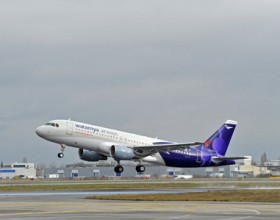Demand for air travel is expected to rebound next year as the global economy recovers, but airlines will continue to report significant losses as excess capacity forces them to keep ticket prices low, an industry trade group said Tuesday.
 The International Air Transport Association said industrywide losses would reach $5.6 billion in 2010, larger than a previous forecast of $3.8 billion. Still, the projected losses are half the record $11 billion loss expected for 2009.
The International Air Transport Association said industrywide losses would reach $5.6 billion in 2010, larger than a previous forecast of $3.8 billion. Still, the projected losses are half the record $11 billion loss expected for 2009.
Passenger demand could grow by about 4.5 percent next year, reversing a 4.1 percent drop in 2009, the association’s secretary general, Giovanni Bisignani, said in a statement.
“Tough times continue,” Mr. Bisignani said. “The number of travelers will be back to the peak levels of 2007, but with $30 billion less in revenues.”
Earlier fears of a wave of new airline bankruptcies during the winter low season have subsided, thanks to the industry’s collective cash reserves of about $38 billion — most of that built up through aircraft sales and leasebacks as well as borrowings from international capital markets.
But despite that cash cushion, Mr. Bisignani warned there was “no recovery in sight for 2010.”
Asian airlines are likely to show the sharpest improvement next year, with losses expected at about $700 million, compared with $3.4 billion in 2009. The recovery will be led by China, whose economy is forecast to grow by 9 percent next year.
Airlines in Europe will be the slowest to recover, generating the largest expected losses — $2.5 billion next year, the association said. In North America, losses are expected to shrink to $2 billion, from $2.9 billion this year.
In the Middle East, carriers’ losses are expected to fall to $300 million, from $1.2 billion in 2009, despite the recent financial difficulties affecting Dubai. The gulf region has become a major hub for intercontinental traffic.
Airlines have reduced the number of available seats by about 6 percent this year, exceeding the decline in passenger numbers. But the air industry group warned that roughly 1,300 new aircraft were scheduled for delivery to airlines in 2010, which would contribute 2.8 percent to global capacity growth and help to keep a lid on airfares.
As if to underscore that trend, Delta Air Lines, the world’s biggest airline by passengers carried, said on Tuesday that it expected to maintain its seating capacity next year at 2009 levels, rather than cut seats by a further 3 percent as previously planned.















